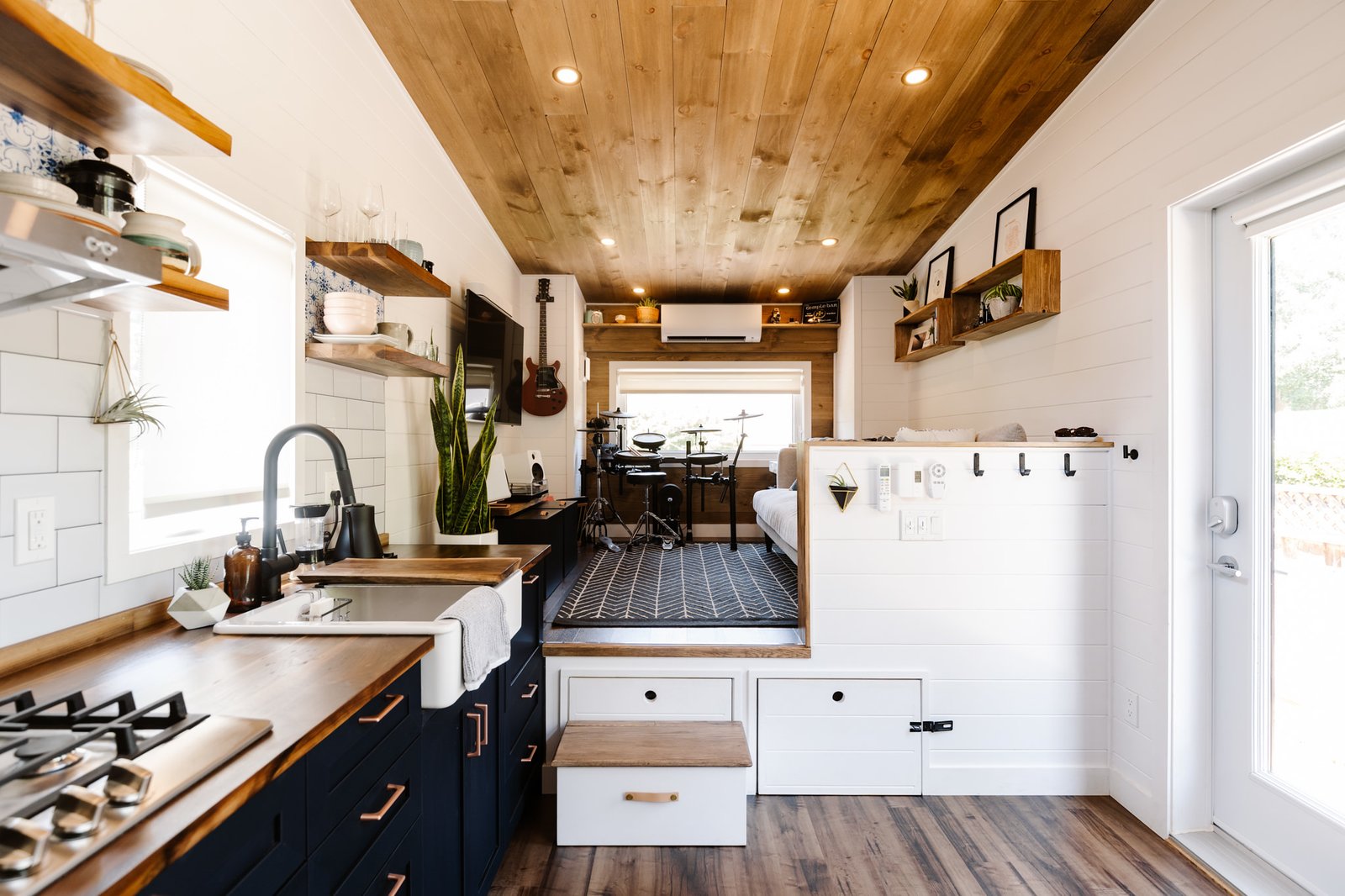Here’s What They Don’t Tell You About Living in a Tiny House
The micro home movement paints a rosy picture of financial freedom, simplicity, and self-determination—but going small comes with its own set of challenges.

The micro home movement paints a rosy picture of financial freedom, simplicity, and self-determination—but going small comes with its own set of challenges.

In a verdant forest in Washington State, Stephen Proctor’s new life awaited. The visual artist sold his home in Nashville to head west, where he imagined living untethered amid the flora and fauna of the Columbia River Gorge in a newly purchased tiny home. But after making an inquiry with the county about electrical and septic hookups—and an address—a foreboding yellow tag appeared on his front door. "You know the line from Lord of the Rings?" says Stephen, "‘One does not simply walk into Mordor?’ Well, I was like, ‘One does not simply live in a tiny house.’"

"I wanted a simpler, more contemplative life," says Stephen Proctor, who left Nashville to continue work as a visual artist from the remote Pacific Northwest. But after being targeted by a hard-nosed permitting official, he faced too many unknowns, ultimately deciding to sell the home. "I didn't want to fight them or have to blaze a new trail—that’s not why I got into the tiny home thing," he says.
Photo by Jeremy Stanley
On the advice of longtime locals—and given the number of ad hoc living arrangements in that remote area of Washington—Stephen expected to settle in with nary a hindrance from the government. So few zoning laws surrounding tiny homes had been established by local jurisdictions; how could he clear hurdles that didn’t yet exist?
However, because a local permitting official had never dealt with tiny homes before, Stephen suddenly faced a minimum of $10,000 in inspection fees, and it would be at least four months until the process could even begin. To start, state-licensed tradespeople would have to peek under the hood, removing all the finishes of his new home. What’s worse, a tiny home consultant warned that without clear legislation by the city, county, or state, there might be no end to bureaucracy. "This is not the stuff they tell you about on Tiny House Nation," recalls Stephen, referencing the reality television show that’s all happy endings.

Stephen’s home was designed by area tiny home builder Matt Impola of Handcraft Movement. The 31-foot-long, 330-square-foot home blends Scandinavian and Japanese styles, and was outfitted to suit Stephen’s lifestyle as a traveling artist. Recently, the home was sold to a new owner, and Stephen plans to build anew—this time, without wheels.
Photo by Jeremy Stanley
He ultimately folded, selling his tiny home with the intent to build a similarly small cabin—this time with a foundation, and in accordance with established building codes. Across the river in Oregon, where laws are more lax, "none of this would have happened," he says. In places that have yet to adopt rules surrounding tiny homes, it’s buyer beware.
Even in the San Francisco Bay Area, where cities are adopting progressive measures to solve for housing shortages, tiny home dwellers still exist in limbo. "I don’t get mail there," says Ryan Tuttle, who has been careful to keep a low profile since her home-on-wheels is registered with the DMV as an RV. That status is by far the easiest and most affordable way to live tiny—you don’t need to permit the build as you must with an ADU, and since zoning laws don’t apply, you can park it anywhere there is already a primary residence. But, since you technically can’t remain in an RV for longer than 30 days on end, treating one like a permanent home can attract the attention of whistle-blowing bureaucrats or nosy neighbors who cry NIMBY.

Ryan Tuttle’s airy tiny home in the San Francisco Bay Area has distinct work areas and a surprising amount of storage space. She travels often for work as a photographer, so the non-traditional, downsized living arrangement is perfectly suited for her and her dog. Since her tiny home is titled with the DMV as an RV, and not a permitted structure with a foundation, she has to keep a low profile so as not to attract the attention of whistleblowers.
Photo by Ryan Tuttle
See the full story on Dwell.com: Here’s What They Don’t Tell You About Living in a Tiny House
Related stories:
